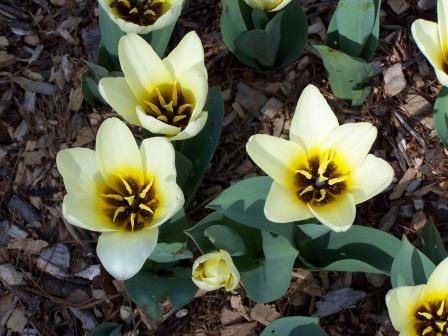Soil solarization is regarded as an environmentally friendly alternative to pesticides for controlling nematodes, weeds and disease. Sheets of plastic (generally clear) are spread over the ground and solar energy heats the soil underneath to temperatures as high as 55C (or 131F). Since the soil environment is usually insulated from temperature extremes, the organisms that live there are unlikely to be resistant to heat stress.
This is a practice best suited to agricultural production, where monocultures of plants have attracted their specific diseases and pests. Decades of research have shown success in controlling pests in greenhouses, nurseries, and fields. But there’s a down side to this chemical-free means of pest control.
It shouldn’t be surprising that beneficial soil organisms, in addition to pests and pathogens, are killed by solarization. Studies have found that soil solarization wipes out native mycorrhizal fungi and nitrogen-fixing bacteria. One expects that other beneficial microbes, predacious insects, and parasitoids living in the soil (but so far unstudied) would be eliminated as well.
This may be an acceptable loss to those who are producing crops; soil can be reinoculated with mycorrhizal fungi, for example. But for those of us caring for our own gardens and landscapes, this is literally overkill. (And consider that most of us probably have trees and shrubs whose fine roots extend over our entire property.)
So this spring, instead of solarizing your soil, consider some less drastic measures of pest and disease control. Minimize soil disruption to preserve populations of desirable microbes. Plant polycultures (more than one species) in your vegetable garden, or at least practice crop rotation. Protect and nourish vegetable gardens with compost. Use coarse organic mulches, which provide habitat for beneficial insects and spiders, in landscaped areas. Above all, try to treat your soil as the living ecosystem it is, rather than a war zone.

Lately I’ve been giving a lot of thought to crop rotation in the home garden. It just doesn’t make sense to me to rotate crops in my 25×40 foot space. Garden pests come in from who knows what kind of distances, and I’m supposed to believe that moving my tomato plant 25′ is going to protect it? Really?
Can you comment on (or direct me to studies that do) the different colors of plastic? You mentioned clear plastic in your post – what about black? What is the temperature difference? Also I am wondering about the short term use of solarization (a couple of months) to kill off some weeds before re-claiming gardening area. Wood chips aren’t easy for me to procure, so would solarization be a good alternative? I’d really be interested to read the research behind it all.
MiSchelle, the crop rotation is especially effective against pathogens and root insects, which may have difficulty moving over any distance. With flying insects, it’s less effective – but that’s where polyculture or intercropping might help, even in a small space.
Jam, clear plastic is more effective than black because it acts like a greenhouse – light is transmitted through and some of the energy absorbed by the soil is re-radiated as heat, which is trapped by
the plastic. Black plastic absorbs all visible light, so it doesn’t get as hot.
I hope to do a more in-depth analysis of the literature sometime in the future – there are hundreds of articles. But from what I’ve seen, I would not recommend solarization for weed control. The damage to the soil ecosystem is significant.
My resort to solar sterilization was as a passive mechanism for non-chemical fumigation – when my soil had become infected with fusarium, verticilium, septoria, and other pathogens. (I’m dealing primarily here with non-disease resistant, but heavenly, flavorful, ambrosia-laden, nectar-of-the-gods-like home-grown heirloom tomatoes – fruits with an exquisite balance of tart and sweet of you-can’t-get anywhere except your own backyard kinid of crop – the ultimate reason to even have a garden (IMHO). I liken it to a PC that has become so infected with viruses that a “restore the OS from scratch”, “re-prep the hard drive” and “start over” is the recommended solution from the gurus. Yes, you have to restore the environment afterwards, and sure, if you’ve been diligent in preventing the pathogens from accumulating in the first place, it wouldn’t have been necessary, but still a not unreasonable way to begin again. I’ll be testing how well (or not) it worked this year. Blog post here.
This article is very timely since it is just about gardening season in KC. I’ve been trying to make my urban landscape as environmentally responsible as possible, and with 3 young children, I’m trying to help them learn as well.
Soil solarization, a nonchemical technique, will control many soilborne pathogens and pests. This simple technique captures radiant heat energy from the sun, thereby causing physical, chemical, and biological changes in the soil.